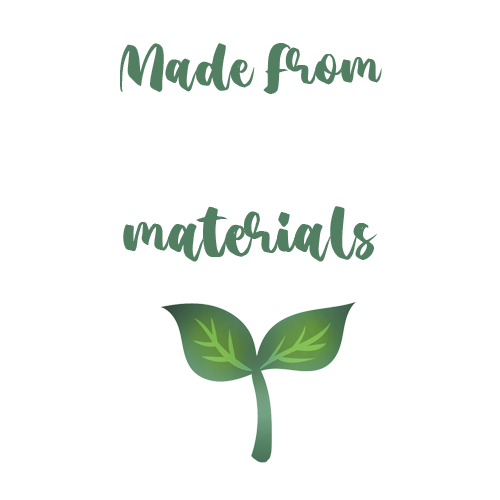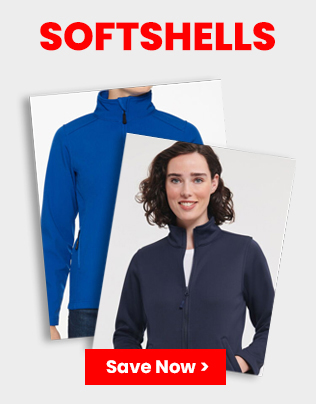Jargon Buster
Our dictionary where you can find out what 'stuff' means…
Absorbency
A measure of how much water a fabric can absorb.
Acrylic
Acrylic fibre is a synthetic polymer fibre that contains at least 85% acrylonitrile.
Allen Solley Placket
Single piece placket that is hidden after sewing. The process utilizes existing fabric for the outside placket face.
Applique
Applique is a sewing technique in which fabric shapes, lace or trim, are sewn onto a foundation fabric to create designs.
Backing Yarn
Yarn which is napped on the inside of a fleece garment and creates a soft lining of fleece.
Ballistic nylon
Ballistic nylon is a thick, tough synthetic fabric used for a variety of applications.
Binding
In sewing, binding is used as both a noun and a verb to refer to finishing a seam or hem of a garment, usually by rolling or pressing then stitching on an edging or trim.
Blend
A Blend is a fabric or yarn made up of more than one type of fibre.
Canvas
Canvas is an extremely heavy-duty fabric used for making sails, tents, marquees, and other functions where sturdiness is required. It is also popularly used on fashion handbags.
Carding
Carding is the processing of brushing raw or washed fibres to prepare them as textiles.
Chino cloth
Chino cloth is a kind of twill fabric, usually made primarily from cotton.
Colorfast (Colourfast)
A term used to describe whether the colours bleed or not in washing.
Combing
A cleansing process performed to remove additional impurities from the staple fibre.
Compaction
A shrinkage control technique used in textile manufacturing.
Cord
Cord is twisted fibre, usually intermediate between rope and string. It is also used as a shortened form of corduroy.
Cordura Fabric
Constructed using high tenacity fibre technologies. Exceptionally durable, versatile and reliable, designed for tear resistance.
Corduroy
Corduroy is a durable cloth.
Cotton
Cotton is a soft fibre that grows around the seeds of the cotton plant, a shrub native to the tropical and subtropical regions of both the Old World and the New World. The fibre is most often spun into thread and used to make a soft, breathable textile.
Course
The rows of loops or stitches running across a knitted fabric.
Cut
Means the number of needles per inch utilized when knitting fabric.
Double Needle Hem
A double row of stitching at the seam.
Drop Tail
Design where the back of the garment is longer than the front.
Durability
How durable a fabric or yarn is.
Dyes
Dye is used to colour fabric. There are two main types: Natural dyes and synthetic dyes. The process is called dyeing.
Embroidery
Embroidery is an ancient variety of decorative needlework in which designs and pictures are created by stitching strands of some material on to a layer of another material. See also: Machine embroidery.
Eyelet
Grommets and eyelets are metal, plastic, or rubber rings that are inserted into a hole made through another material. They may be used to reinforce the hole, to shield something from the sharp edges of the hole, or both.
Face Yarn
Exterior yarn of a fleece garment.
Fibre (or Fiber)
Fibre or fiber (see spelling differences) is a class of materials that are continuous filaments or are in discrete elongated pieces, similar to pieces of thread. Fibers are often used in the manufacture of other materials. They can be spun into filaments, thread, or rope. They can be used as a component of composite materials. They can also be matted into sheets to make products such as paper or felt.
Finishing
Finishing refers to any process performed on yarn or fabric after weaving to improve the look, performance, or “hand” (feel) of the finished textile.
Fleece
Multi-yarn fabric including a soft napped interior and a smooth exterior.
Gingham
Gingham is a fabric made from dyed cotton yarn.
Hem
To hem a piece of cloth (in sewing), a garment worker folds up a cut edge, folds it up again, and then sews it down. The process of hemming thus completely encloses the cut edge in cloth, so that it cannot ravel.
Herringbone
A variation on the twill weave construction in which the twill is reversed, or broken, at regular intervals, producing a zig-zag effect.
Hook and Loop
Fasteners (hook-and-pile or touch fasteners), consist of two components. Typically two lineal fabric strips (or alternatively round dots or squares) which are attached (sewn or otherwise adhered) to the opposing surfaces to be fastened.
Inset/Set-In Placket
A placket that is constructed from a separate piece of fabric and sewn in separately. This placket is visible after it is sewn into the garment.
Jersey Fabric
The consistent interlooping of yarns in the jersey stitch to produces a fabric with a smooth, flat face, and a more textured, but uniform back.
Knit Fabric
Fabrics made from only one set of yarns, all running in the same direction. Some knits have their yarns running along the length of the fabric, while others have their yarns running across the width of the fabric.
Linen
Linen is a material made from the fibers of the flax plant. Linen produced in Ireland is called Irish linen. Linens are fabric household goods, such as pillowcases and towels.
Loom
The Loom is a machine used for weaving fabric.
Mercerized cotton
Mercerization is a treatment for cotton fabric and thread mostly employed to give cotton a lustrous appearance.
Microfibre (fiber)
Microfibre is a term for fibres with strands thinner than one denier. Fabrics made with microfibres are exceptionally soft and hold their shape well.
Nap
Fuzzy, fur-like feel created when fibre ends extend from the basic fabric structure to the fabric surface. The fabric can be napped on either one or both sides.
Nonwoven fabric
Non-woven textiles are those which are neither woven nor knit, for example felt. Non-wovens are typically not strong (unless reinforced by a backing), and do not stretch. They are cheap to manufacture.
Nylon
Nylon is a synthetic polymer, a plastic. Nylon fibres are used to make many synthetic fabrics and women's stockings.
Open-End Spinning
Technique used to create yarn using a combing roll and rotor.
Optical Brightner
An additive used to brighten fabric.
Ounces Per Sq. Yd.
Unit of measurement to define a fabric's weight.
Pique
A tightly knit medium-weight fabric with a rough or raised surface.
Polartec
A family of soft, easy care & pill resistant, breathable fabric that provide excellent warmth.
Polyester
Polyester is wrinkle resistant man-made synthetic fibre.
Poplin
Poplin is a heavy, durable fabric that has a ribbed appearance. It is made with wool, cotton, silk, rayon, or any mixture of these. The ribs run across the fabric from selvage to selvage. They are formed by using coarse filling yarns in a plain weave.
Quilt
Quilting is a method of sewing or tying two layers of cloth with a layer of insulating batting in between.
Reactive Dyes
Dyes which form chemical bonds with cotton fibres.
Rib Knit
A basic stitch used in weft knitting in which the knitting machines require two sets of needles operating at right angles to each other. Rib knits have a very high degree of elasticity in the crosswise direction.
Ring Spinning
A spinning technique which stretches and twists the yarn between rollers in one operation.
Seamless Collar
Collar that is knit in a circle and set circular includes no “joining” seams on the collar.
Self Trim
Trim that is constructed from the body fabric.
Silk
Silk is a natural protein fiber that can be woven into textiles. It is obtained from the cocoon of the silkworm larva, in the process known as sericulture, which kills the larvae. The shimmering appearance for which it is prized comes from the fibres triangular prism-like structure, which allows silk cloth to refract incoming light at different angles.
Single Needle
Single row of stitching at the seam.
Singles
A single yarn.
Spandex fibre
Spandex or elastane is a synthetic fiber known for its exceptional elasticity (stretchability). It is stronger and more durable than rubber, its major plant competitor. It was invented in 1959 by DuPont, and when first introduced it revolutionized many areas of the clothing industry.
Staple
Staple is the raw material, or its length and quality, of fiber from which textiles are made.
Tactel
Tactel is the brand name of a man-made fibre made from nylon.
Taping
Design where a piece of fabric is used to cleanly cover a seam.
Three-End Fleece
Fleece fabric made from cobmined face, tie-in and backing yarns.
Tie-In Yarn
Joining yarn between the face and backing yarns in fleece fabric.
Top Stitching
A design feature that is a means of securing fabric plies whereby the original seam is folded under and sewn down.
Twill weave
Twill is a type of fabric woven with a pattern of diagonal parallel ribs. It is made by passing the weft threads over one warp thread and then under two or more warp threads. Examples of twill fabric are gabardine, tweed and serge.
Viscose
Viscose is an artificial cellulose-based polymer, sometimes used as a synonym for Rayon.
Weaving
Weaving is an ancient textile art and craft that involves placing two sets of threads or yarn made of fibre called the warp and weft of the loom and turning them into cloth. This cloth can be plain (in one colour or a simple pattern), or it can be woven in decorative or artistic designs, including tapestries.
Welt
Clean edged fabric usually used to trim sport shirt collars and cuffs.
Wool
Wool is the fiber derived from the hair of domesticated animals, usually sheep.
Woollen
Woollen or woollen is the name of a yarn and cloth usually made from wool.
Woven fabric
A woven fabric is a cloth formed by weaving. It only stretches in the bias directions (between the warp and weft directions), unless the threads are elastic. Woven cloth usually frays at the edges, unless measures are taken to counter this, such as the use of pinking shears or hemming.
Yarn
Yarn is a long continuous length of interlocked fibers, suitable for use in the production of textiles, sewing, crocheting, knitting, weaving and ropemaking. Yarn can be made from any number of synthetic or natural fibers.
Yarn Size A measure of yarn weight.



















